Doug Varone and Dancers premieres two works at the Joyce Theater.
What strikes me first about Doug Varone’s new Dome is the amount of stillness in it. This most musical of choreographers is at home with maelstroms. In his 2004 Castles, which opened his company’s program at the Joyce Theater, architectural and social structures form and dissolve and re-form like elaborate sand castles washed over by waves. Arches, bridges, chains, towers, melées, clusters, games surge and vanish in the swirl and fanfares of Prokofiev’s Waltz Suite, Op. 110 (music drawn from the ballet Cinderella, the opera War and Peace, and the film Lermontov).
Dome is bleaker and harsher. The sputter and blare and crash and drum rolls of much of its accompanying music—Christopher Rouse’s startling Trombone Concerto—suggests a post-apocalyptic world in which sweet melodies live short lives. Jane Cox’s splendid lighting backs the dancers for much of the time with a glowing, orange sky that hints at distant fires. The dancers enter the stage gradually, like survivors returning to a demolished home. But Varone is not telling a story, only showing a society crumbling and rising, in response to dangers they don’t fully understand.
These people wear an assortment of layered, rough-textured garments in beige, brown, and black (by Reid Barthelme and Harriet Jung). They are: Hollis Bartlett, Xan Burley, Julia Burrer, Casey Loomis, Alex Springer, Eddie Taketa, Hsiao-Jou Tang, and Brandon Welch. As in Castles, they are superb in their ability to move like silk in the wind one moment and turn twitchy and gawky the next. They can hurtle across the floor or crash to it, as Springer does in one startling entrance into a world where everyone else, at the moment, is curling and uncurling in slow motion.
In response to an outburst by the trombone and cymbals, those on stage erupt into a frenzy, then freeze momentarily. Whatever is driving these people beside the music does so in jolts. Their athleticism and loose-limbed grace keep hitting an invisible wall. They set each other off too; one explosion or its response travel through whoever’s around. Once, they all drop to their knees with an audible thud. Often they collapse to the floor. After one such collapse, they grope into motion, each in his/her own way, while Burley, on her knees, remains motionless amid them; Springer falls beside her like a boat bumping a pier.
They recover as an ensemble, stand and raise their arms, while Cox returns the backdrop—which has become gray—to its orange glow. The front curtain rises extremely slowly at the beginning of the piece, revealing performers’ feet and legs moments before we know who they are. Now, at the end, it descends equally slowly on this world of heat and ice. Going. Going. Gone.
The disastrous dramas that Rouse’s music suggests and the pent-up, then released rhythms of the dancing give Dome some of the tensions of a thriller. Varone’s own new solo, The Fabulist, is more of an ongoing flow, even though it intersperses springy, expansive steps with small jerks, shudders, and gestures that suggest he’s pushing heavy curtains out of the way and bolting through them. Sometimes he seems to be shaking the dance off himself like a dog come from the river. At other times, his surroundings press against him, make him cave in. Varone, a brilliantly distinctive dancer is no longer a young one, and The Fabulist is not a young man’s dance, however powerful he is as a performer. The title is apt; he might be telling his own history—or making one up.
He dances with only occasional pauses for thought. His musical accompaniment is a long song by David Lang called “Death Speaks.” I regret very much that the recorded female singer rarely enunciates the words clearly enough. Varone himself knows by heart such passages as this: “I will protect you/ from the hunter, from the forest/ from the flowers, from your dreams/ from the wicked girl, from her shadow/ I will keep your eyes covered/ I will protect you.” We only grasp a few words here and there.
As deeply expressive as Varone’s performing is and however moving are the struggles and visions and sudden changes of mind and climate that beset him, the solo several times seems about to end, and then doesn’t. Understanding the text more fully might propel The Fabulist more strongly forward for us.
Ben Stanton’s lighting is a crucial accomplice. In the beginning, it pins Varone in beams from either side of the stage and imprisons him in a tent of light. This tent is almost palpable; Varone’s gestures stop exactly where the light ends, although he makes no drama out of this. Pools of light in different sizes appear and disappear along the center line of the stage; a diagonal ray from above creates a momentary lozenge of light that he seems to beckon toward himself. He may be pinned in an illuminated crack that appears between two slightly open black curtains at the ear of the stage, or in a glowing shrunken column with barely enough room for him to move.
Castles, ornate and intricate as it is, most vividly displays the dancers as they swerve between fine, nimble behavior and witty reactions. Given the Prokofiev music, you can imagine Bartlett and Springer—who vie like rivals, bounce off each other like buddies, and are often at a loss—as suitors for an invisible princess. Could it be sprightly blonde Loomis? Three women (Burley, Burrer, and Tang) flop like rag dolls and haul Welch around. In Taketa, Tang finds her nimble prince, and Burley, hair awry, swans about like a heroine abandoned by her story.
The above are mind games I’m playing, based on fleeting images, but there’s another story here. Taketa, who has danced in the company since 1994 with undiminished agility and sensitivity, is leaving it after this season. I wish him well. Varone’s loss.

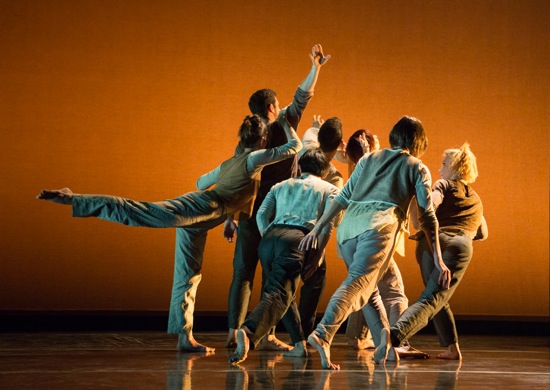
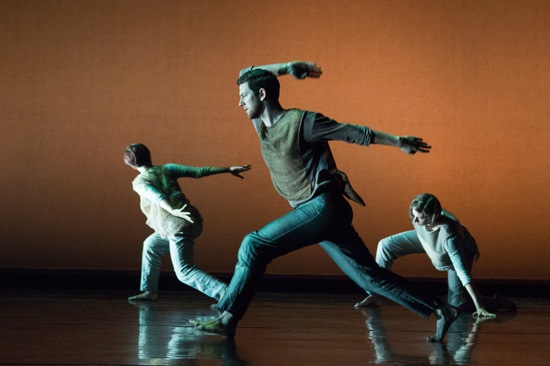
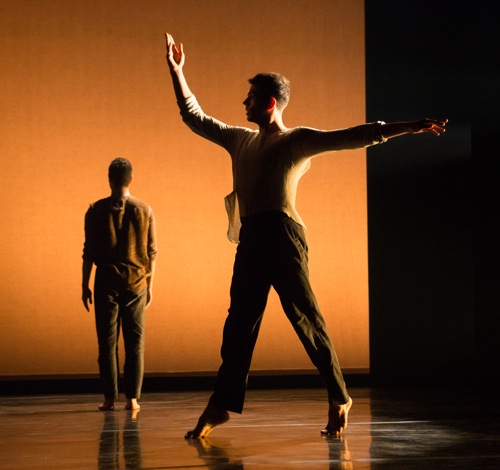
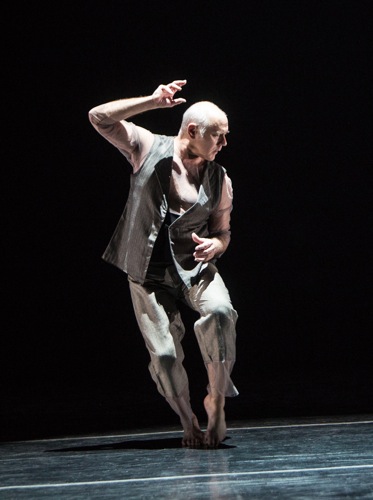
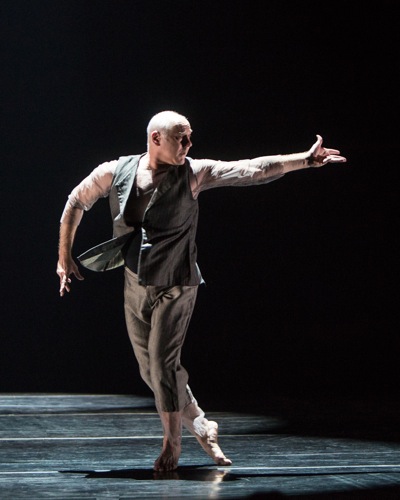
Deborah, you’re right on, as usual. I wish I could’ve seen Doug this season, but I’m doing Isaac Mizrahi’s “Peter and the Wolf” at the Guggenheim. In the photo IDs, it looks to me like Hollis, center, in the second photo from the top, not Alex.
And Eddie Taketa must be about eligible for PARADIGM by now, bless his agile heart!
Thank you, Gus, for the correction. Alex has now yielded to Hollis. My apologies to both.